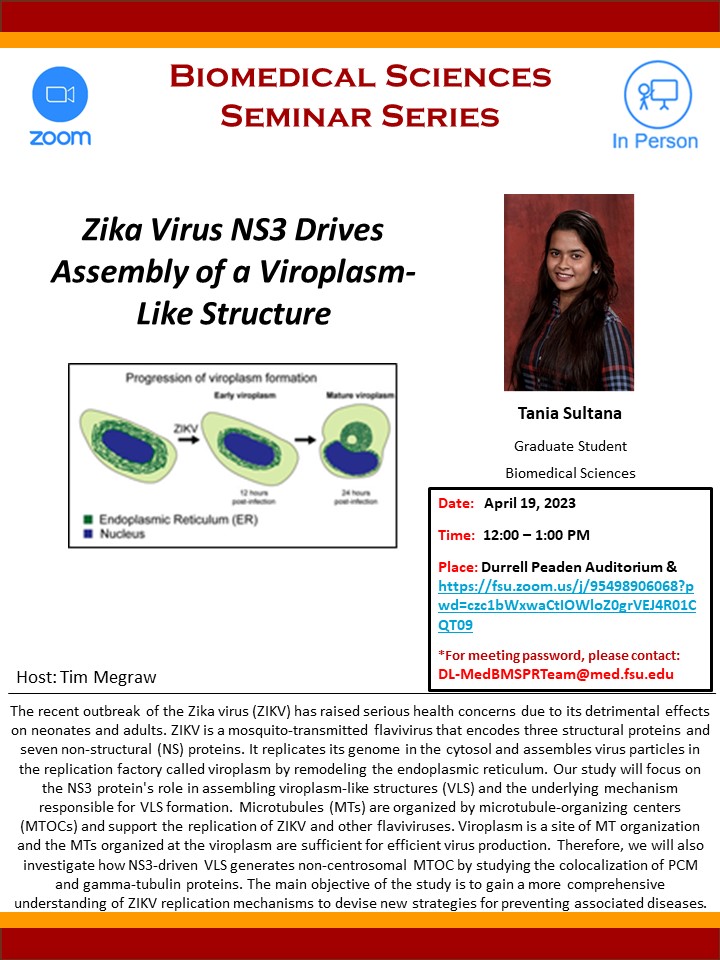Zika Virus NS3 Drives Assembly of a Viroplasm-Like Structure

The recent outbreak of the Zika virus (ZIKV) has raised serious health concerns due to its detrimental effects on neonates and adults. ZIKV is a mosquito-transmitted flavivirus that encodes three structural proteins and seven non-structural (NS) proteins. It replicates its genome in the cytosol and assembles virus particles in the replication factory called viroplasm by remodeling the endoplasmic reticulum. Our study will focus on the NS3 protein's role in assembling viroplasm-like structures (VLS) and the underlying mechanism responsible for VLS formation. Microtubules (MTs) are organized by microtubule-organizing centers (MTOCs) and support the replication of ZIKV and other flaviviruses. Viroplasm is a site of MT organization and the MTs organized at the viroplasm are sufficient for efficient virus production. Therefore, we will also investigate how NS3-driven VLS generates non-centrosomal MTOC by studying the colocalization of PCM and gamma-tubulin proteins. The main objective of the study is to gain a more comprehensive understanding of ZIKV replication mechanisms to devise new strategies for preventing associated diseases.
COM 1400

